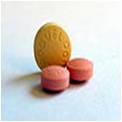Faculty Peer Reviewed
In a press conference on April 27, 2010, Attorney-General Eric Holder announced that AstraZeneca had agreed to pay a $520 million fine to settle an investigation into the marketing practices of its blockbuster drug, quetiapine (Seroquel) [1]. According to federal investigators, quetiapine, originally approved by the FDA in 1997 for the treatment of schizophrenia and bipolar mania, was promoted by AstraZeneca for use in unapproved (and far commoner) conditions, such as anxiety and Alzheimer’s disease. As a result of AstraZeneca’s promotion, federal insurance programs (Medicare and Medicaid) had paid out millions of dollars in reimbursement claims for an unproven treatment [1,2].
Drug approval by the FDA is always indication-specific, but the FDA does not prohibit off-label prescriptions once the drug is on the market [3]. Off-label prescriptions are written all the time: aspirin is given to diabetics to reduce the risk of cardiovascular disease, montelukast (Singulair) is prescribed to patients with COPD, and tacrolimus (Prograf) is given to patients with autoimmune conditions [4]. The practice of prescribing drugs off-label goes back decades, probably to the inception of the FDA. A study published in 1985 examined the 100 most common uses of marketed medicines and found that 31 were for indications not approved by the FDA [5]. A more recent analysis of prescribing practices in 2001 showed that 21% of all prescriptions filled for 160 common drugs were for off-label indications. The proportions were even higher for anticonvulsants (74%), antipsychotics (60%), and antibiotics (41%) [6].
The problem with wide spread off-label use is that there is often little or no evidence to support it. In fact, in a study of office based physician practices, Radley et al. estimated that 73% of medications prescribed for off-label uses lacked evidence of clinical efficacy, and that only 27% were supported by strong scientific evidence [6].
The core of the off-label controversy lies in the different beliefs and incentives that various stakeholders have. Pharmaceutical companies say that off-label use provides innovations in clinical practice. Insurers, both private and federal, object to paying for drugs that have no proven clinical benefit. Doctors find themselves caught in between. They need to fight diseases for which conventional treatments have failed, but evidence for their efficacy (the guiding principle of modern practice) is frequently lacking.
Currently, the FDA’s Division of Drug Marketing, Advertising, and Communications (DDMAC) is charged with providing oversight of the pharmaceutical industry once a drug has been approved [7]. Because the FDA does not have power to regulate the practice of medicine or enforce prescription abilities at the physician level, the agency controls prescription practices indirectly by controlling advertising and promotional labeling. Under the DDMAC regulations, pharmaceutical companies can promote drugs and devices only for approved indications. If a manufacturer wants to disseminate information about a new use, it must have at least a pending FDA application for that new use [7]. Such applications require costly clinical trials and in many cases the cost is too large to justify the expense. Illegally promoting a new use is simply cheaper, quicker, and more commercially feasible.
As the government assumes a larger role in healthcare, the FDA will be under increasing pressure to contain costs. Since doctors are not prohibited from prescribing off-label, the only way to stop the practice of prescribing drugs for unproven uses is by further regulating the practice of medicine. Is the government prepared to take this step? If evidence-based practice is the ultimate goal, the government will have to confine the prescribing of drugs to only those uses that have been proven effective. Should the FDA, using the threat of legal or administrative sanctions, demand that doctors prescribe only proven treatments?
The problem for doctors is that few treatments are proven beyond doubt. What if nothing else works? Must not the burden of proof be lower? What if there is a good molecular or physiological argument but no clinical trial? What if the patient has tried the treatment before and it worked? What if the new indication is closely related to the primary indication? What if the treatment is known to be harmless and inexpensive? These and other considerations are always a part of a doctor’s clinical judgment.
For now, the individual physician can prescribe drugs off-label without violating law or committing malpractice (Femrite v. Abbott Northwestern Hospital in the Minnesota Court of Appeals, 1997), although, a physician who prescribes off-label does bear increased liability for any harm that results from their use (Richardson v. Miller, 2000) [8, 9].
So what did the multimillion dollar settlement actually accomplish? It certainly did not stop the off-label prescribing of AstraZeneca’s products. To be sure, some of the money will come back into the federal insurance funds, which is commendable, but it remains to be seen if the settlement will have any impact on AstraZeneca’s behavior or doctors’ prescribing practices.
Dr. Volodarskiy is a first-year resident at NYU Langone Medical Center
Peer reviewed by Daniel Shine, MD, Associate Professor of Medicine, Chief of Medicine, Tisch Hospital
Image courtesy of Wikimedia Commons.
References:
[1] Wilson, D. For $520 Million, AstraZeneca Settles Case Over Marketing of a Drug New York Times, Published April 27, 2010 http://www.nytimes.com/2010/04/28/business/28drug.html
[2] Markon J. AstraZeneca settles kickback, marketing case http://www.washingtonpost.com/wp-dyn/content/article/2010/04/27/AR2010042705360.html Washington Post, Published April 28, 2010
[3] FDA Off-Label “Off-Label” and Investigational Use of Marketed Drugs, Biologics and Medical Devices Policy http://www.fda.gov/ScienceResearch/SpecialTopics/RunningClinicalTrials/GuidancesInformationSheetsandNotices/ucm116355.htm
[4] Stafford, RS. Regulating Off-Label Drug Use — Rethinking the Role of the FDA New England Journal of Medicine 358;14 2008
[5] Strom BL, Melmon KL, Miettinen OS. Post-marketing studies of drug efficacy: why? Am J Med. 1985;78:475-480.
[6] Radley DC, Finkelstein SN, Stafford RS. Off-label prescribing among office-based physicians. Archives of Internal Medicine 2006;166: 1021-6.
[7] FDA Drug Marketing Advertising and Communications Division (DDMAC) http://www.fda.gov/AboutFDA/CentersOffices/CDER/ucm090142.htm
[8] Femrite v. Abbott Northwestern Hospital, 568 N.W.2d 535 (Minn. Ct. App. 1997). http://www.lawlibrary.state.mn.us/archive/ctappub/9709/c997586.htm
[9] Richardson v. Miller, 44 S.W.3d 1, 15 -16 (Tenn. Ct. App.,2000) http://www.tsc.state.tn.us/opinions/tca/Ca3qtr2000.htm

